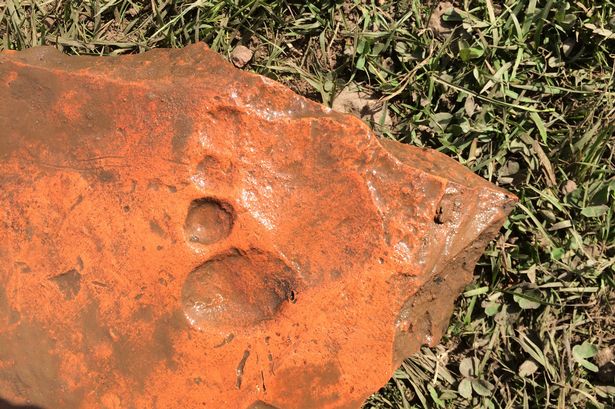The Romans proudly marched up and down Britain and left a number of markings for historians to study and analyze. Although, the Roman rule over Britain has long gone, some of their footprints remain firm on the land.
A tablet bearing the partial imprint of a naked Roman foot has been discovered not far from the legendary Hadrian’s Wall. Despite the fact the famous fortified Garrison of Vindolanda poured out scores of ancient artifacts, this is the first time that an actual Roman footprint is discovered from the site, which is believed to be 2,000 years -old.
Analysis of the imprint suggested that it belonged to a teenage boy, who either made it intentionally or stumbled upon it accidentally. However, it is rather hard for the researchers to develop a military connection of the boy since men between the ages of 16 and 50 were allowed to join the Roman Army to serve in the garrisons scattered all over Roman empire.
A volunteer researcher and student of University of Western Ontario, Canada, made the discovery and was absolutely delighted with the findings. Mel Bernard said that she was particularly happy about the discovery since this is her first ever archaeological find and is an important development for the history of the region.
One of the many Roman auxiliary forts, Vindolanda was a military garrison to protect the Roman road from Picts and other local tribes, the army operated in the region between River Tyne and Solway Firth. The ruins of the Roman garrison are located near the modern countryside of Bardon Mill. Roman tablets with military writings and other belongings of the soldiers have been discovered from the ruins of Vindolanda that is now a major tourist attraction.
The very first post-Roman record of the Vindolanda is found in the writings of William Camden, especially in his famous Britannia dated 1586. In 1702 when Christopher Hunter visited the site, he recorded his findings, which are very different from what we see today, partially due to a massive surge of theft during the late eighteenth and early nineteenth century. The first major modern excavation was launched by Rev. Anthony Hedley in the year 1814 who died in 1835 but not before documenting all his findings in great detail. The current ‘seasonal excavation’ projects were started by the famous archaeologist Eric Birley in 1930’s. After Birley’s death, his sons Anthony and Robin carried on his legacy and made a number of significant discoveries. Currently, the excavation is led by Birley’s grandson Andrew who personally supervises the excavation that takes place every year in summer. In 2010, the researchers discovered the body of a 8 to 10 year -old girl with her hands tied, they found out that the girl was murdered some 1,800 years ago and was possibly a spy working for the Picts, who attacked the Roman garrisons and caravans regularly plundering whatever they could get their hands on.
